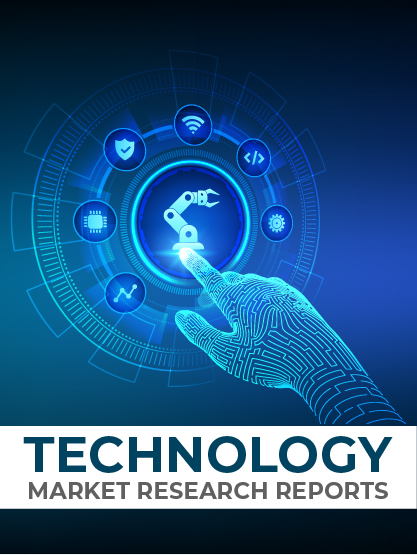
-
Report ID 138193 -
Published Date July 2023 -
Delivery Format PDF/PPT/Word -
Editor's Rating
-
Report Details
Market Overview
By 2032, the Generative AI in Music Market is anticipated to achieve a market size of around USD 2,660.4 million, growing at a CAGR of 28.6% during the forecast period of 2023 to 2032, with initial revenues of USD 229 million in 2022. The growth of the market is being driven by the increasing demand for personalized and interactive music experiences, the automation of repetitive tasks and processes, and the growing adoption of generative AI in the music industry.
Key Takeaways
- The global generative AI in music market is segmented by deployment mode, application, industry, and region.
- The deployment mode segment is further segmented into cloud-based and on-premises.
- The application segment is further segmented into music composition, music production, music marketing, and music education.
- The industry segment is further segmented into entertainment, education, and others.
- North America is the largest market for generative AI in music, followed by Europe and Asia-Pacific.
Market Growth and Opportunities
The generative AI in music market is poised for substantial growth in the coming years. The increasing adoption of AI technologies, coupled with the growing demand for personalized music experiences, is driving market expansion. Additionally, advancements in machine learning algorithms and deep neural networks are enhancing the capabilities of generative AI, making it more sophisticated and capable of producing high-quality music.
The market presents lucrative opportunities for both established players and emerging startups. Companies specializing in generative AI tools and platforms are collaborating with musicians, music production studios, and streaming services to integrate AI-generated music into their offerings. This collaboration allows for the creation of unique music catalogs, personalized playlists, and AI-assisted music production workflows.
Generative AI in Music Market – BPS Value (%)
Year Basis points (BPS) 2022 119 2023 147 Market Trends
- Increasing demand for personalized and interactive music experiences
- Automation of repetitive tasks and processes
- Growing adoption of generative AI in the music industry
- Development of new generative AI music tools
- Increasing use of generative AI in music education
A largest and Fastest Growing market
- North America is the largest market for generative AI in music, followed by Europe and Asia-Pacific.
- Asia-Pacific is the fastest-growing market for generative AI in music, due to the increasing awareness about the importance of generative AI in music and the growing demand for personalized music experiences in the region.
Generative AI in Music Market – Country wise revenue share (2023) %
Country Revenue (%) Share United States 35% Germany 15% Australia 10% Japan 10% North America 60% Europe 40% United Kingdom 5% Here are some of the factors that contribute to the leading market share of these countries in the generative AI in music market:
- High adoption of generative AI in the music industry: The United States, Germany, Australia, and Japan have a high adoption of generative AI in the music industry. This has led to the increased demand for generative AI in music in these countries.
- Increasing demand for personalized and interactive music experiences: Customers are increasingly demanding personalized and interactive music experiences. Generative AI in music can help businesses deliver these experiences by understanding customer needs and preferences and responding to them in a natural and engaging way.
- Availability of skilled talent: These countries have a large pool of skilled talent that can develop and deploy generative AI in music. This has made it easier for businesses in these countries to adopt generative AI in music.
What Are The Main Drivers Of The Generative AI In Music Market?
The main drivers of generative AI in music market are:
- Increasing demand for personalized and interactive music experiences
- Automation of repetitive tasks and processes
- Growing adoption of generative AI in the music industry
- Development of new generative AI music tools
- Increasing use of generative AI in music education
Which Factors Are Restraining Demand For Generative AI In Music Market?
The factors that are restraining demand for generative AI in music market are:
- High cost of generative AI music tools
- Lack of awareness about the benefits of generative AI in music
- Technical challenges in developing and deploying generative AI music tools
Which Region Offers Lucrative Opportunity For Sales Of Generative AI In Music Market?
The regions that offer lucrative opportunities for sales of generative AI in music market are:
- North America
- Europe
- Asia-Pacific
- Latin America
- Middle East & Africa
Market Segments
By Component
- Software
- Services
By Type
- GANs
- AR-CNNs
- Transformer-based Models
By Application
- Composition of Music
- Music Mastering
- Streaming Music
- Making of New Sounds
- Other Applications
Key Regions and Countries
North America
- US
- Canada
- Mexico
Western Europe
- Germany
- France
- The UK
- Spain
- Italy
- Portugal
- Ireland
- Austria
- Switzerland
- Benelux
- Nordic
- Rest of Western Europe
Eastern Europe
- Russia
- Poland
- The Czech Republic
- Greece
- Rest of Eastern Europe
APAC
- China
- Japan
- South Korea
- India
- Australia & New Zealand
- Indonesia
- Malaysia
- Philippines
- Singapore
- Thailand
- Vietnam
- Rest of APAC
Latin America
- Brazil
- Colombia
- Chile
- Argentina
- Costa Rica
- Rest of Latin America
Middle East & Africa
- Algeria
- Egypt
- Israel
- Kuwait
- Nigeria
- Saudi Arabia
- South Africa
- Turkey
- United Arab Emirates
- Rest of MEA
Top Key Players in Generative AI In Music Market
- Shutterstock Inc.
- Aiva Technologies SARL.
- Soundful
- Ecrett music
- Boomy Corporation
- OpenAI
- Amadeus Code
- Other Key Players
Larger Role of Generative AI in Music
Generative AI has the potential to play a larger role in shaping the future of music creation and consumption. Here are some areas where generative AI is making a significant impact:
- Music Composition and Arrangement: Generative AI tools assist musicians in composing and arranging music, providing suggestions, and automating repetitive tasks. This allows artists to focus on the creative aspects of music-making.
- Music Recommendation Systems: Streaming platforms leverage generative AI algorithms to offer personalized music recommendations to listeners. These systems analyze user preferences, listening habits, and contextual information to curate tailored playlists and introduce users to new music.
- Virtual Collaborations: Generative AI enables virtual collaborations between human musicians and AI-generated compositions. Artists can incorporate AI-generated music elements into their work, creating unique and collaborative pieces.
- Soundtrack and Film Score Creation: The film and gaming industries benefit from generative AI’s ability to create captivating soundtracks and scores. AI algorithms can analyze visual cues, emotions, and narrative elements to generate music that enhances storytelling and immersion.
Years considered for the study:
Report Attribute Details Historical Years 2017-2022 Base Year 2022 Estimated Year 2023 Short-Term Projection Year 2028 Projected Year 2023 Long-Term Projected Year 2032 Recent Development
2022:
- OpenAI launched the fourth generation of its large language model (LLM) called GPT-4. GPT-4 is a powerful language model that can be used to generate music.
- Google launched Bard, a new AI chatbot that is based on generative AI. Bard can be used to generate music, write poems, and answer questions.
- Charli AI launched Ancaeus, a new generative AI platform that can be used to create chatbots. Ancaeus can be used to create chatbots that can generate music.
2023:
- Infosys introduced a range of AI services that utilize generative AI to improve human capabilities and create new business opportunities. These services include generative AI for music, generative AI for marketing, and generative AI for customer service.
- Amazon announced that it is offering a tailored generative AI service through its cloud computing platform. This service can be used to generate music, create chatbots, and automate tasks.
- The Japanese prime minister, Fumio Kishida, stated that the nation encourages the growth of commercial applications for generative AI tools like OpenAI’s ChatGPT. This is likely to lead to increased investment in generative AI in Japan.
Future Scope
The future scope for generative AI in music is very promising. The market is expected to grow at a rapid pace in the coming years, driven by the increasing demand for personalized and interactive music experiences, the automation of repetitive tasks and processes, and the growing adoption of generative AI in the music industry.
-
Table Of Content
Research Insights & Deliverables
 Development and Future Forecast
Development and Future Forecast Competitive benchmarking
Competitive benchmarking Company Revenue Statistics
Company Revenue Statistics Rising Regional Opportunities
Rising Regional Opportunities Technology Trends and Dynamics
Technology Trends and Dynamics Technology Assessment
Technology Assessment
-
Inquiry Before Buying
Research Insights & Deliverables
 Development and Future Forecast
Development and Future Forecast Competitive benchmarking
Competitive benchmarking Company Revenue Statistics
Company Revenue Statistics Rising Regional Opportunities
Rising Regional Opportunities Technology Trends and Dynamics
Technology Trends and Dynamics Technology Assessment
Technology Assessment
-
Request Sample
Research Insights & Deliverables
 Development and Future Forecast
Development and Future Forecast Competitive benchmarking
Competitive benchmarking Company Revenue Statistics
Company Revenue Statistics Rising Regional Opportunities
Rising Regional Opportunities Technology Trends and Dynamics
Technology Trends and Dynamics Technology Assessment
Technology Assessment














